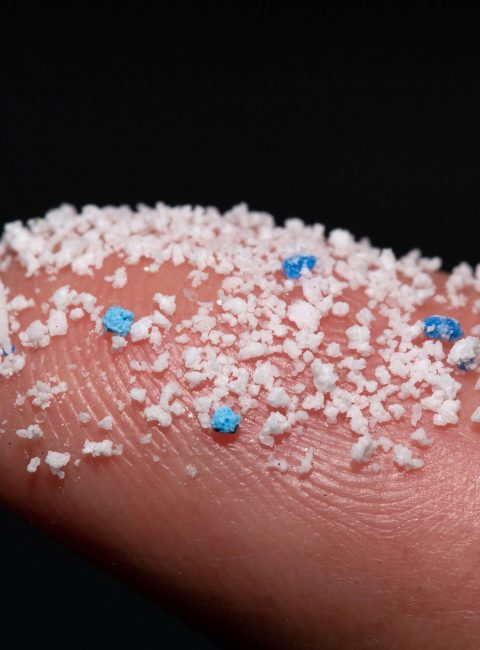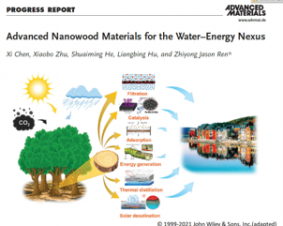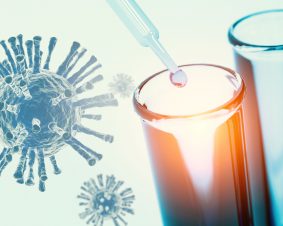 >
Spotlight January 2021: Nanoplastics challenge – How to improve tracking of nanopolystyrene distribution in the environment.
>
Spotlight January 2021: Nanoplastics challenge – How to improve tracking of nanopolystyrene distribution in the environment.
In January, we present a paper published in the Nature Journal communications materials. The article focuses on the development of a new detection method of nanopolystyrene. The method not only makes it possible to detect nanoplastics in the environment for the first time, but also to determine their accumulation in plants and animals.
Nanoplastics, which are added to numerous commercial products or are created by further breaking down microplastics, pose a major threat to our environment. Detection in the environment is difficult for two reasons. First, the small size makes it difficult to detect the particles in the environment. Second, the concentrations are very low. However, tracking nanoparticles is essential to understand potential effects on plants and animals. The team led by Maya Al-Sid-Cheikh has succeeded in improving the detection of nanoplastics by using a special label. To do this, they used a special form of carbon, called 14C, which does not occur naturally. Unlike other labels, e.g. fluorescent dyes, this label cannot be lost, e.g. by fading. By using such 14C-labeled polystyrene particles, the uptake and distribution of nanoplastics in mussels could be tracked for the first time. The 14C-labeled nanopolystyrene could be detected even in very low concentrations, which also allows detection in the environment, e.g. lakes or rivers. The method can be used to better understand the distribution of nanoplastics in the environment and in organisms by means of laboratory experiments. However, it does not allow direct measurement of nanoplastics in the environment because they do not carry the label. As the authors also critically note, it is possible that labeled particles and naturally occurring particles behave differently.
Original publication:
Al-Sid-Cheikh, M., Rowland, S.J., Kaegi, R. et al. Synthesis of 14C-labelled polystyrene nanoplastics for environmental studies. Commun Mater 1, 97 (2020). https://doi.org/10.1038/s43246-020-00097-9

Weitere Spotlights
Spotlight September 2021: Wood, the raw material of the future?
One of the greatest challenges facing humanity is to produce clean drinking water under the given circumstances of global warming, population growth and increasing littering. In September, we would like to present a review article that believes one approach to solve this problem is the use of nanoscale wood. In the review, “Advanced Nanowood Materials […]
Read moreSpotlight May 2023: Dual energy – edible batteries
An Italian research group reports on edible batteries that supply electric current and can be digested as food, thus providing energy a second time. What sounds funny at first has a serious background, because in medicine, power sources are needed that could be transported through the digestive tract and possibly remain in the body unintentionally, […]
Read moreSpotlight January 2022: Methods, models, mechanisms and metadata
For the new year, we are presenting no “classic” paper here, but would like to point out an editorial: Methods, Models, Mechanisms and Metadata: Introduction to the Nanotoxicology Collection at F1000 Research. This editorial introduces the F1000Research Nanotoxicology Collection, where best practices can be collected in the form of original research reports, including no-effect studies, […]
Read moreSpotlight March 2021: Is Nanotechnology the Swiss Army Knife against Future Pandemics?
The COVID 19 outbreak has led to a fundamental rethinking of existing approaches to diagnosis, treatment, and prevention methods. The need for better and more efficient concepts is global and urgent. Nanotechnology has long been at the forefront of innovation and has led to advances in many different disciplines. Could this interdisciplinary field help develop […]
Read more


